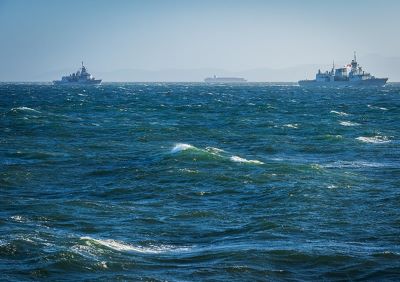Context-
The High Seas Treaty, formally known as the Biodiversity Beyond National Jurisdiction (BBNJ) Agreement, represents a significant milestone in global ocean governance. Aimed at conserving marine biodiversity and managing resources in areas beyond national jurisdiction, this treaty reflects over two decades of advocacy by marine conservationists and scientists. The treaty was finalized in March 2023 and stands as the third implementation agreement under the United Nations Convention on the Law of the Sea (UNCLOS). This comprehensive framework is designed to address uncontrolled resource exploitation and foster international cooperation for ocean conservation.
The High Seas Treaty has three primary objectives:
Conserving Marine Ecosystems: Establishing Marine Protected Areas (MPAs) to safeguard critical habitats and biodiversity.
Equitable Sharing of Marine Genetic Resources: Ensuring that the benefits derived from marine genetic research are shared globally, especially with developing countries.
Mandating Environmental Impact Assessments (EIAs): Requiring thorough assessments for activities that could potentially harm the marine environment.
These goals aim to address the "lawless wilderness" of the high seas, where governance is often fragmented and marine life is vulnerable to overexploitation.
India’s Role and Perspective
India has recently announced its intention to sign and ratify the High Seas Treaty. This move aligns with New Delhi’s long-standing support for equitable governance of the high seas. India advocates for fair distribution of marine resources' benefits, particularly to developing nations lacking the technology and resources for independent exploitation. The country’s push for capacity-building measures demonstrates its commitment to empowering less-developed nations and supports broader goals of sustainable development and environmental stewardship in the maritime domain.
Challenges and Criticisms
Despite its significant promise, the High Seas Treaty faces several critical challenges:
Lack of Consensus on Implementation
The treaty requires ratification by at least 60 countries to come into force. As of now, only eight of the 91 signatory states have ratified it. This slow progress is partly due to uncertainties surrounding disputed maritime spaces, such as the South China Sea. The establishment of MPAs as stipulated by the treaty conflicts with territorial claims in these areas, causing reluctance among states like China and ASEAN countries. Additionally, many maritime states in Asia and Africa are cautious about designating protected zones in resource-rich regions that are vital for coastal communities.
Marine Genetic Resources and Benefit-Sharing
The treaty's provisions on marine genetic resources mandate that countries share a portion of their profits with a global fund dedicated to high-seas protection. This system relies on the goodwill of high-income countries involved in marine genetic research to contribute fairly. However, the treaty lacks enforceable accountability measures, such as mandatory disclosure of accessed resources and generated profits. Critics argue that this could disadvantage smaller, less-capable states and exacerbate existing complexities related to marine genetic research, which is already governed by frameworks like the Convention on Biological Diversity (CBD) and the Trade Related Intellectual Property Rights (TRIPS).
Capacity-Building and Technology Transfer
The treaty emphasizes the importance of capacity-building, research, and information sharing for low- and middle-income countries. However, there are no specific mechanisms to ensure that developed nations fulfill their commitments to provide necessary resources and technology. Critics point out that without such guarantees, less capable nations may struggle to benefit from joint marine research and capacity-building initiatives.
Broader Context of Marine Governance
A critical perspective on marine governance highlights that many significant environmental issues occur not in the high seas but within Exclusive Economic Zones (EEZs) and Territorial Seas where national laws are applicable. Coastal pollution often spreads into the high seas, and overfishing in EEZs frequently leads to migration of fish stocks across borders. While the treaty addresses planned activities in national jurisdictions through Environmental Impact Assessments (EIAs), it does not account for unplanned, environmentally damaging activities. Furthermore, inconsistencies between domestic and international laws undermine collective efforts to protect marine environments.
Conclusion
The High Seas Treaty represents a groundbreaking effort to improve the governance of ocean spaces beyond national jurisdiction. Its success hinges on overcoming several structural and operational challenges. Key issues include the slow pace of ratification, the complexities of marine genetic resource sharing, and the effectiveness of capacity-building measures. Additionally, the treaty’s limitations in addressing transboundary marine environmental impacts and inconsistencies in national and international legislation pose significant obstacles.
To truly address the marine governance dilemma, a more integrated approach is needed—one that treats the high seas as an extension of the EEZs, governed by cohesive and common rules. However, achieving such consensus remains a formidable challenge. Despite its promising goals, the High Seas Treaty’s effectiveness will ultimately depend on the international community's ability to address these multifaceted issues comprehensively.
|
Probable Questions for UPSC Mains Exam- 1. What are the primary challenges hindering the effective implementation of the High Seas Treaty, and how might these challenges impact its goals of marine conservation and equitable benefit-sharing? (10 Marks, 150 Words) 2. How does the High Seas Treaty address the issue of marine genetic resource sharing, and what criticisms have been raised regarding its provisions for benefit-sharing and capacity-building? (15 Marks, 250 Words) |
Source - ORF







